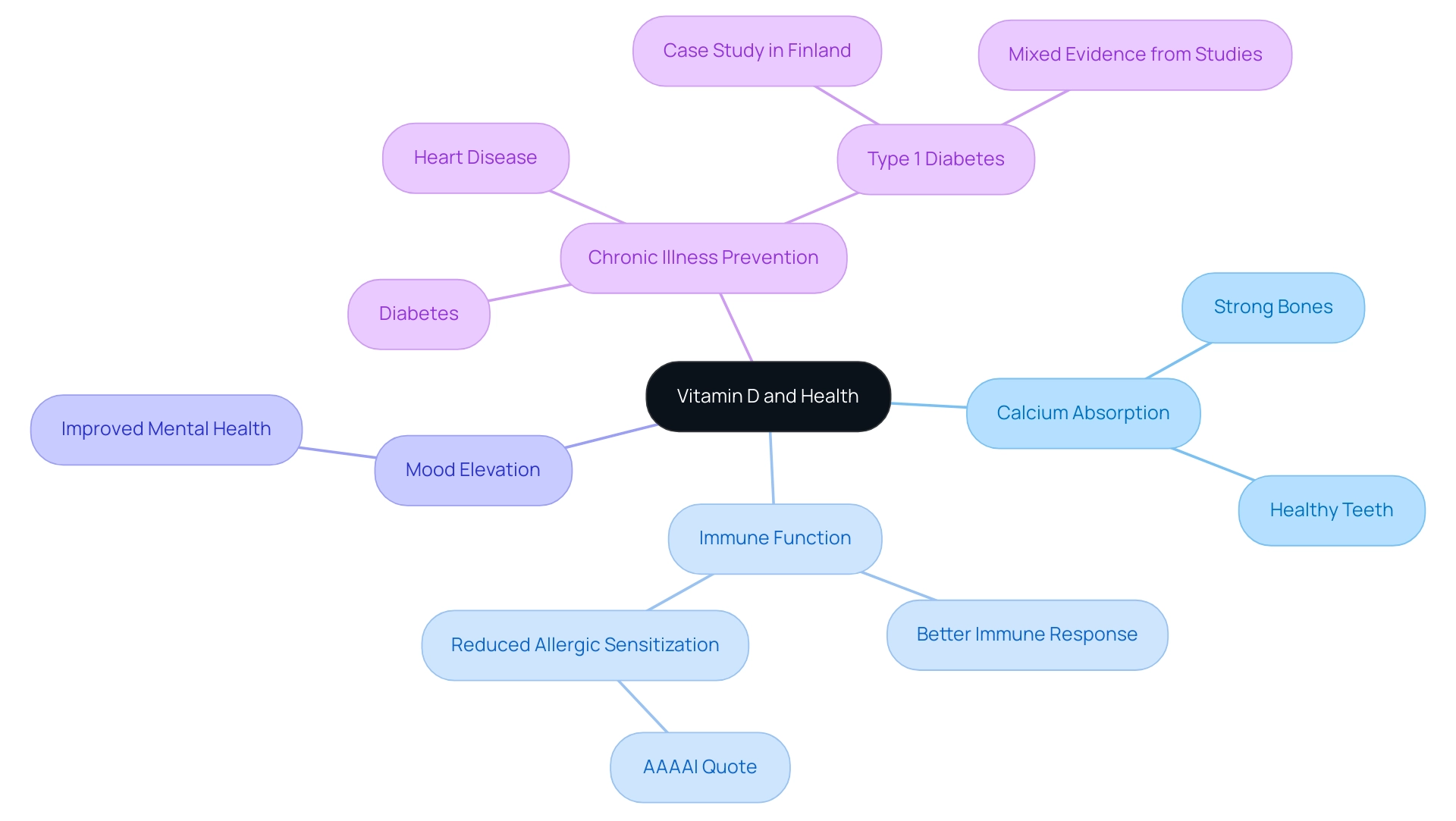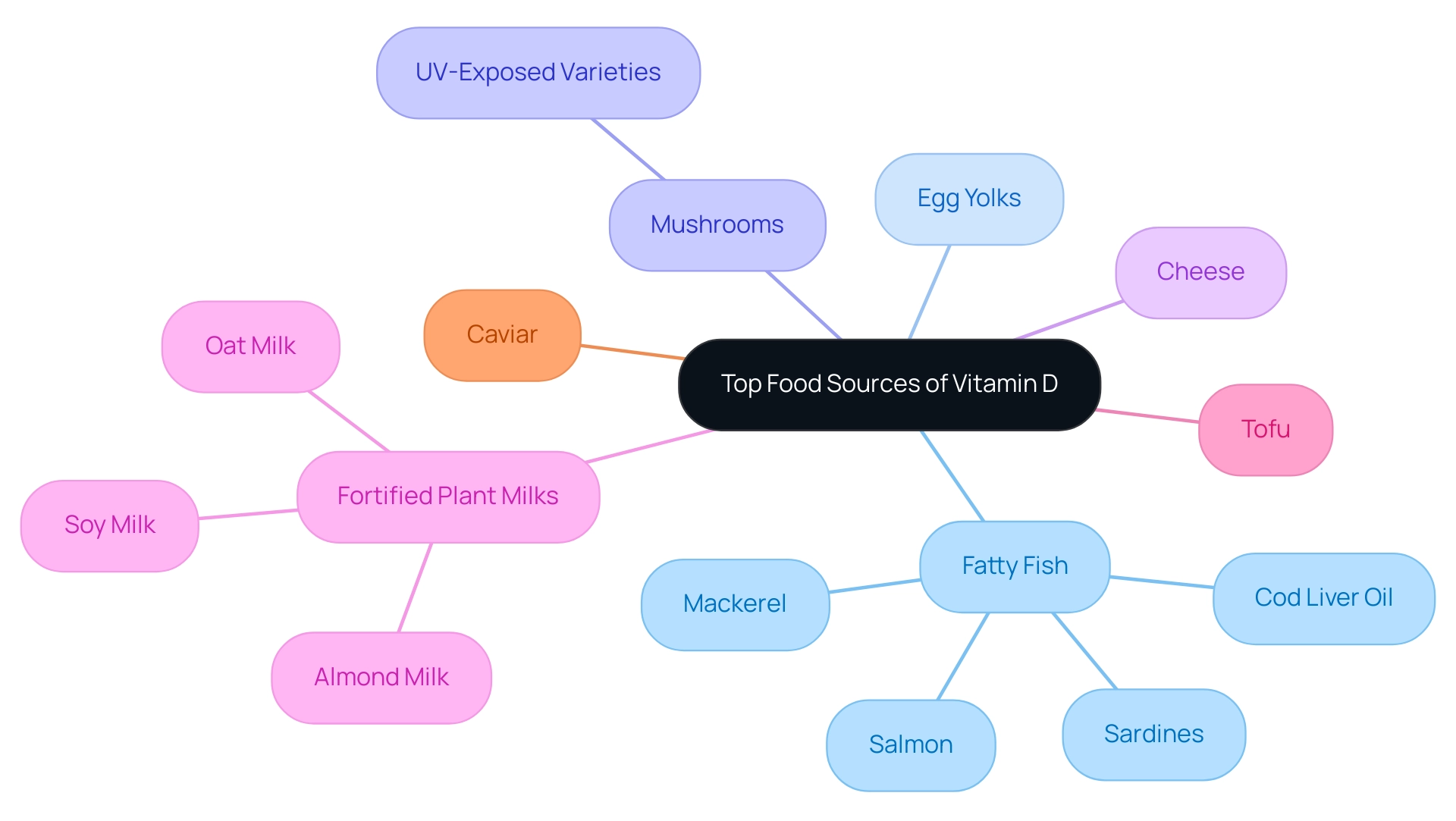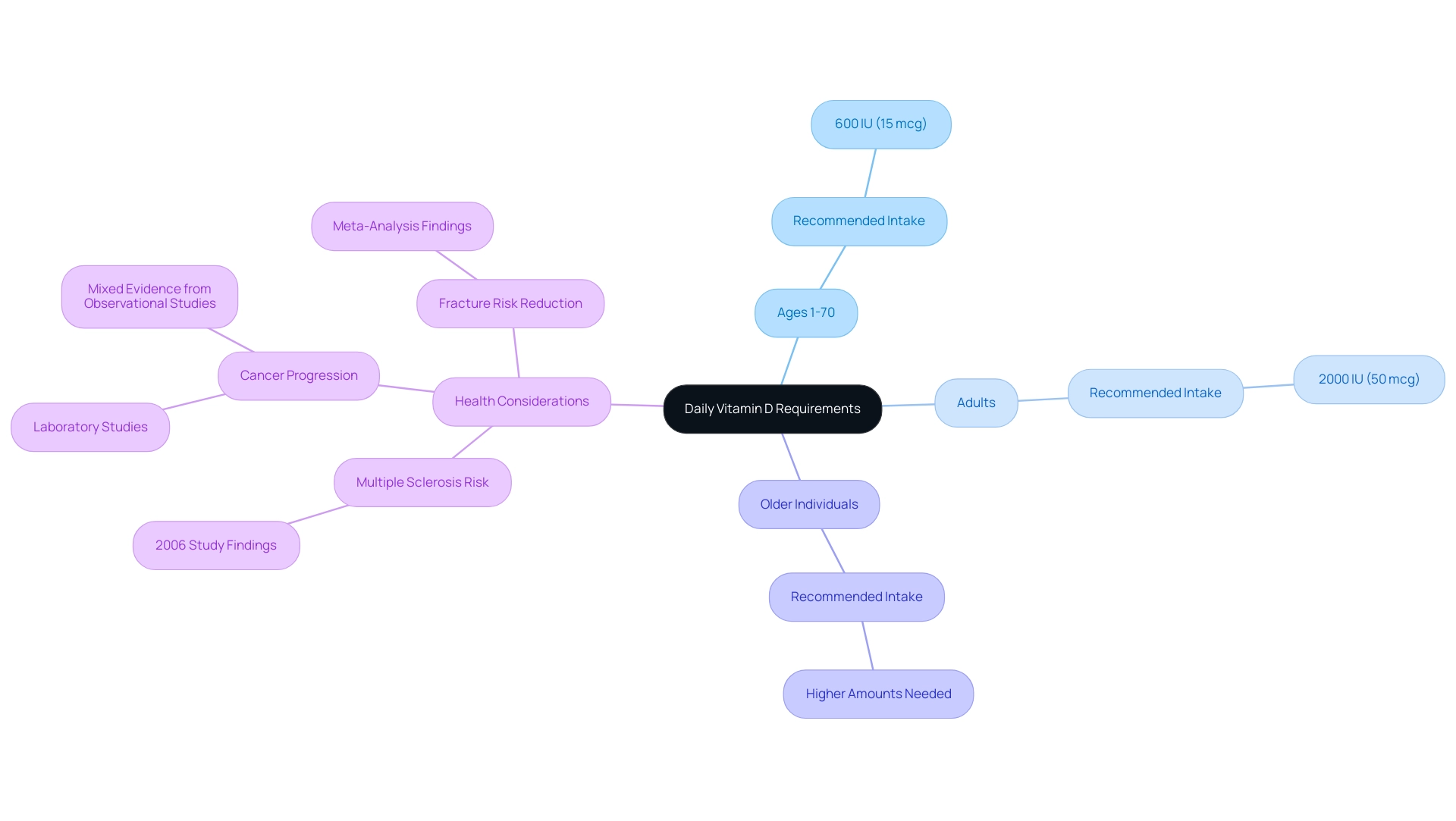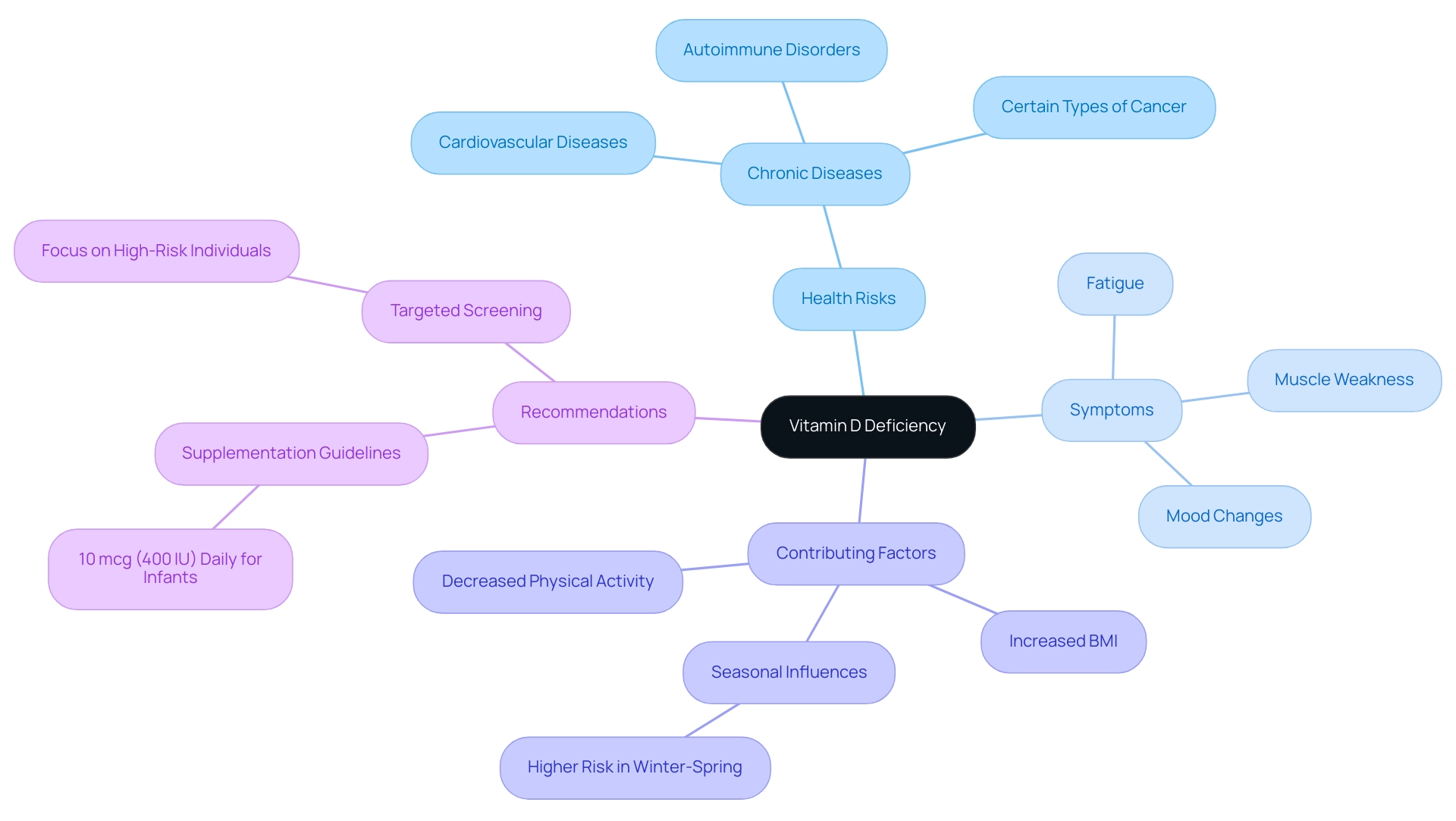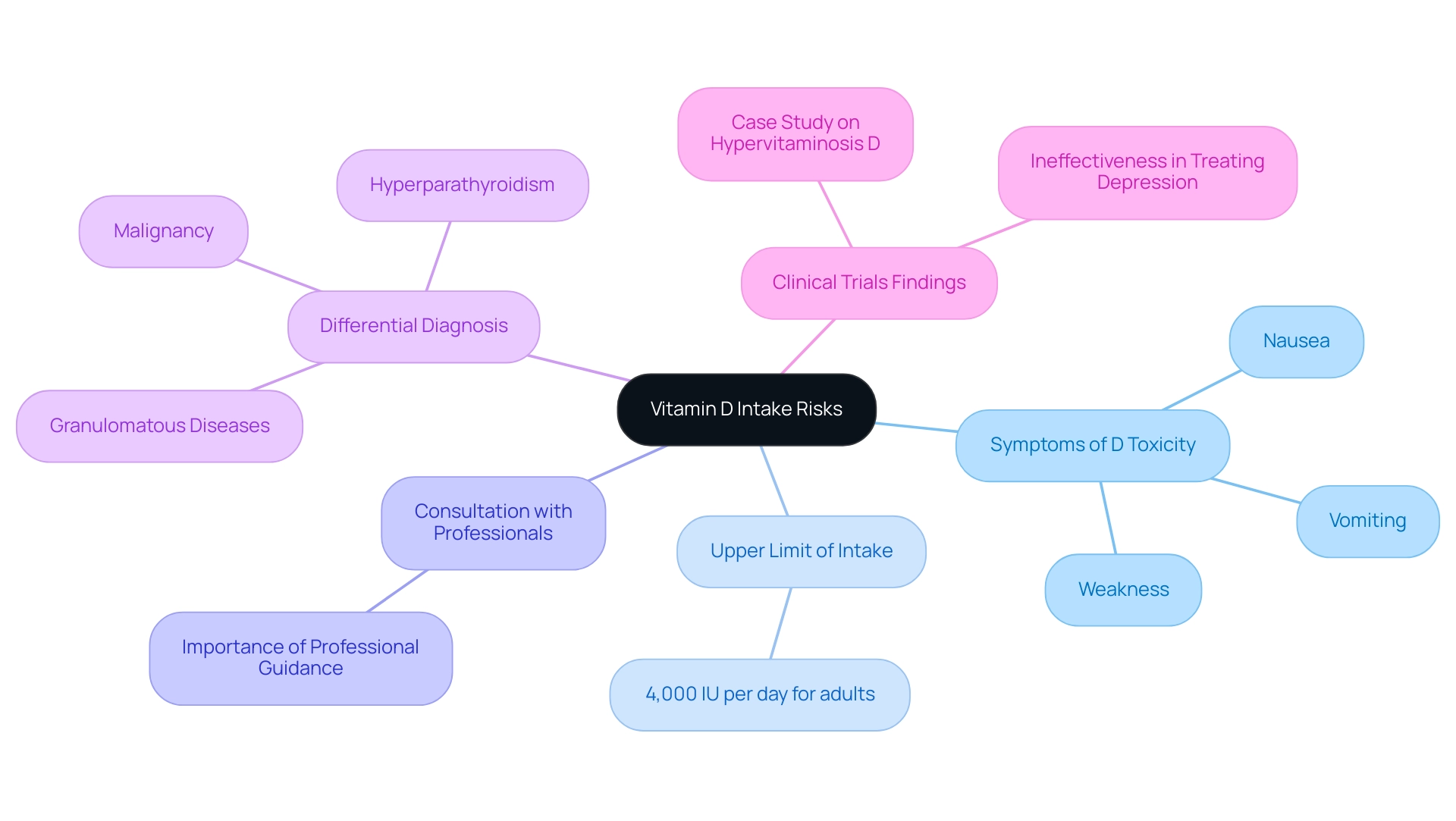Introduction
Vitamin D, often referred to as the "sunshine vitamin," plays a pivotal role in maintaining overall health and well-being. Its influence extends beyond just bone strength; research underscores its connection to immune function, mood regulation, and chronic disease prevention.
Despite its importance, many individuals remain unaware of their vitamin D status, with deficiencies becoming increasingly prevalent worldwide.
This article delves into the essential functions of vitamin D, highlights key dietary sources, outlines daily requirements, and addresses the risks associated with both deficiency and excess.
By understanding the nuances of vitamin D, individuals can make informed decisions to enhance their health and prevent potential complications.
1. The Essential Role of Vitamin D in Health
Vitamin D, often referred to as the 'sunshine nutrient,' is crucial for various physiological functions. It plays a crucial role in calcium absorption, vital for sustaining strong bones and teeth. Current studies suggest that each 20 nmol/L (8 ng/mL) rise in 25(OH)D is linked to a 9% decrease in the likelihood of all-cause mortality and prostate cancer-specific mortality.
Moreover, this nutrient is associated with better immune function and elevated mood, while possibly reducing the chance of chronic illnesses such as heart disease and diabetes. The American Academy of Allergy Asthma and Immunology (AAAAI) suggests a
link between low levels of D exposure and a heightened likelihood of allergic sensitization, emphasizing its significance in overall health. A notable case study in Finland discovered that infants receiving D supplements had a significantly lower chance of developing Type 1 diabetes, suggesting a protective role for the nutrient against this condition.
Given the global prevalence of D deficiency, as highlighted in the updated fact sheet from July 26, 2024, individuals with risk factors for deficiency may need to consider vitamin D foods or supplementation to meet their D requirements. Ensuring adequate intake of this vital nutrient is crucial for maintaining optimal wellness and well-being.
2. Top Food Sources of Vitamin D to Include in Your Diet
Including vitamin D foods in your diet is crucial for maintaining optimal health and may also have broader implications for disease prevention. Here are some of the best food options for acquiring D that deserve a spot on your plate:
-
Fatty fish, including salmon, mackerel, and sardines, are some of the richest vitamin D foods, providing substantial quantities per serving. These fish not only maintain D levels but also provide omega-3 fatty acids, enhancing cardiovascular well-being and possibly reducing the risk of type 2 diabetes when included in a nutritious diet.
-
Cod Liver Oil: This powerful provider of vitamin D foods is highly concentrated and offers a multitude of health advantages, including supporting immune function. However, due to its strong potency, it should be consumed in moderation.
-
Egg yolks are a versatile food and an outstanding source among vitamin D foods, making it easy to boost your intake without extensive meal planning.
-
Vitamin D Foods: Many commonly consumed items, such as dairy products, orange juice, and cereals, are considered vitamin D foods as they are enhanced with D. This fortification helps address dietary deficiencies and is especially beneficial for those with limited sun exposure. Replacing ultra-processed foods with these fortified options can significantly
lower the risk of type 2 diabetes, particularly when combined with high calcium intake.
-
Certain varieties of mushrooms, particularly those exposed to UV light, are excellent examples of vitamin D foods that can provide a remarkable amount of D nutrients. Incorporating these into your meals can enhance not only flavor but also nutritional value.
-
Beef Liver: This nutrient-rich organ meat is an excellent supplier of essential nutrients, including vitamin D foods, making it a powerful addition to a balanced diet.
-
Cheese: While not as concentrated in nutrient D as other sources, certain cheeses contain small amounts that can contribute to overall intake, especially when included in a varied diet.
-
Fortified Plant Milks: Options such as almond, soy, and oat milks are often enhanced with vitamin D foods, making them suitable alternatives for those following a vegan lifestyle.
-
Tofu: Some brands of tofu are enriched with D, making it a valuable option for plant-based diets and one of the important vitamin D foods that enhance nutrient diversity.
-
Caviar: This luxurious delicacy is not only rich in flavor but also considered one of the vitamin D foods that provide a gourmet way to boost your intake.
These vitamin D foods not only help in achieving adequate levels of nutrient D but also contribute to overall wellness and well-being. As Katherine Marengo, a registered dietitian, emphasizes,
That’s why obtaining the nutrient D from food or supplements is best,
highlighting the significance of dietary intake for maintaining optimal levels of this nutrient. Furthermore, taking into account the possible effects of chronic gut infections on well-being, a balanced diet that includes vitamin D foods can play a vital role in enhancing overall wellness.
3. Understanding Daily Vitamin D Requirements
The suggested daily intake (RDA) for D is essential in guaranteeing optimal well-being, and it differs considerably depending on age and personal medical circumstances. According to current guidelines, adults should aim for a daily intake of at least 2000 IU (50 µg) of D. For those aged 1 to 70 years, the aim should be at least 15 mcg or 600 IU per day. Significantly, older individuals and those with particular medical conditions may need greater amounts to sustain sufficient serum levels.
A 2006 study examined the connection between serum levels of a certain nutrient and multiple sclerosis (MS) risk, emphasizing the importance of adequate levels in reducing health risks linked to MS. Furthermore, laboratory studies suggest that this nutrient may inhibit cancer progression, although observational studies present mixed evidence regarding its impact on cancer incidence and mortality. Given these complexities, it is essential to consult with a healthcare provider to determine personalized D needs, especially when dietary intake is insufficient or absorption concerns arise.
4. Health Risks of Vitamin D Deficiency
Vitamin D deficiency presents considerable threats, especially regarding chronic illnesses. Insufficient levels can lead to weakened bones, resulting in conditions such as osteomalacia in adults and rickets in children. Recent studies suggest a troubling correlation between low D status and an increased risk of chronic diseases, including:
- Cardiovascular diseases
- Autoimmune disorders
- Certain types of cancer
Alarmingly, factors such as increased BMI and decreased physical activity, often linked to reduced outdoor time, contribute to a decline in D status, which is a pressing public health concern. Significantly, individuals are 1.7 times more likely to have serum levels of 25(OH)D below 50 nmol/L in the winter-spring months compared to summer-autumn, highlighting seasonal influences on D levels. Common symptoms of deficiency include:
- Fatigue
- Muscle weakness
- Mood changes
This underscores the necessity of proactive monitoring and intervention.
The American Academy of Pediatrics highlights the
significance of supplementation, advising 10 mcg (400 IU) daily for all infants who are not breastfed and consuming less than 1,000 mL/day of D-fortified formula or milk. Furthermore, a recent case study emphasizes the necessity for focused D screening and education on sufficient consumption, especially for individuals at greater risk due to restricted sunlight exposure. Addressing D levels through vitamin D foods and supplementation is essential for overall wellness, especially since preventing D deficiency should be prioritized by governments, policymakers, and health professionals.
5. The Dangers of Excessive Vitamin D Intake
Vitamin D is undeniably crucial for maintaining overall health; however, it is essential to recognize that excessive intake can lead to toxicity. Symptoms of D toxicity include:
These symptoms may advance to severe complications such as kidney damage. The established upper limit for D intake is generally recognized as 4,000 IU per day for adults.
Considering the potential risks linked to elevated amounts of D, it is essential to evaluate vitamin D foods alongside any supplements. Consulting with a healthcare professional is advised before making significant adjustments to D intake, ensuring that individuals can effectively balance their needs while minimizing the risk of toxicity. Current research indicates that the consequences of
excessive D intake from vitamin D foods are significant, as proper management of these dietary sources is critical for maintaining health.
Additionally, differential diagnosis for D hypervitaminosis must consider various causes of hypercalcemia, including:
- Malignancy
- Granulomatous diseases
Furthermore, clinical trials have shown that vitamin D supplements did not significantly help prevent or treat depressive symptoms, particularly in middle-aged to older adults who were not on prescription antidepressants. A case study on the differential diagnosis of hypervitaminosis D highlights the importance of accurate identification of the condition for appropriate treatment and management of hypercalcemia.
Conclusion
Vitamin D is an indispensable nutrient that significantly impacts overall health, from supporting bone integrity to enhancing immune function and mood regulation. Its deficiency poses serious health risks, including increased susceptibility to chronic diseases and adverse health outcomes. As the prevalence of vitamin D deficiency remains a global concern, understanding dietary sources and daily requirements is essential for everyone.
Incorporating vitamin D-rich foods, such as:
- Fatty fish
- Fortified products
- Certain mushrooms
into daily meals can help individuals meet their vitamin D needs. For those at risk of deficiency, supplementation may be necessary, but it is crucial to consult healthcare professionals to tailor intake to individual health conditions and lifestyle factors.
While maintaining adequate vitamin D levels is vital, it is equally important to be aware of the potential dangers of excessive intake. Toxicity can lead to severe health complications, emphasizing the need for a balanced approach to vitamin D consumption. By prioritizing awareness and proactive management of vitamin D levels, individuals can significantly enhance their health and well-being, paving the way for a healthier future.
